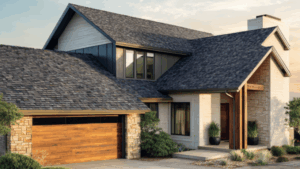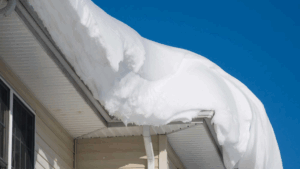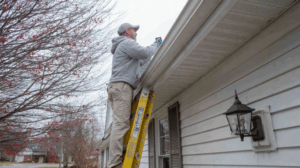Indianapolis summers bring more than heat. One moment you’re enjoying sunshine, the next a thunderstorm with hail is pummeling rooftops. That’s when you start asking, “What is the best roofing material to survive those storms?” or “Is your roof hail storm ready?” Because when a roof fails, you don’t just lose curb appeal — you risk serious damage.
In this post, you’ll learn:
- Why roof storm damage is more than cosmetic in Indy
- How to evaluate impact, wind, and rain resistance in roofing
- What you need to do before picking a new roof (budget, structure, code)
- The best roof materials for summer storms with comparisons
- Local FAQs about storm‑resistant roofing
Cornett Roofing Systems can help. If you suspect your roof isn’t storm-ready, we’ll inspect and advise at no extra charge.
The Stakes in Indianapolis: Why Storm Protection Matters
Defining Storm Risks & Roofing Terminology
Indianapolis lies in a zone where summer brings powerful thunderstorms, hail, and straight-line winds. Roofs here face repeated stress from:
- Hail strikes that can crack or puncture roofing
- Wind uplift that loosens edges or pulls up materials
- Driving rain that pushes water behind flashings or into valleys
When we ask “best roofing material,” we’re really asking: which materials survive under these pressures? That’s why you’ll hear terms like impact rating, wind uplift rating, and Class 4 hail resistance. These measures tell you how “hail storm ready” your roof is.
Marion County building codes and some local ordinances may require minimum wind or impact ratings—especially in newer or high-risk subdivisions. Always check local requirements or ask us to help verify.
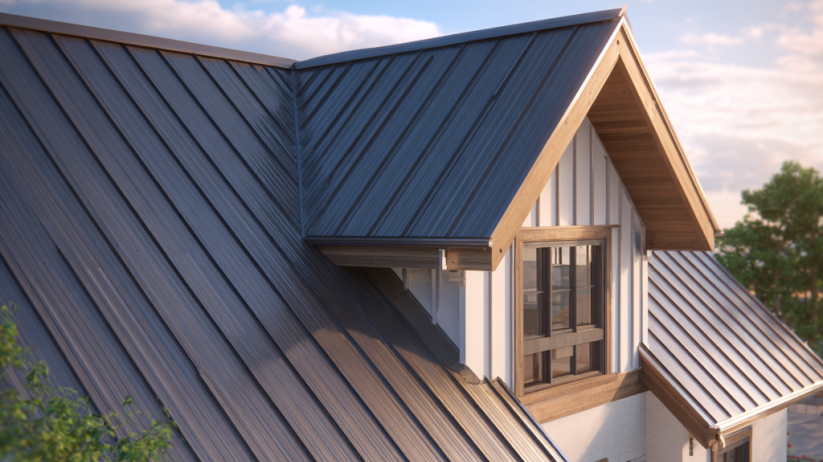
Preparation First: What to Do Before Choosing Your Roof
You can’t pick a storm-proof roof in a vacuum. Here’s a preparation checklist:
- Roof condition inspection — check for weak flashing, missing fasteners, or prior damage
- Structural load review — heavier materials may demand upgraded rafters or sheathing
- Permit & code check — verify what impact or wind ratings your area mandates
- Budget planning — stronger materials cost more, but often cost less over time
- Qualified installers only — even the best materials fail if poorly installed
- Understand warranties — see how they treat hail or storm damage
Once that groundwork is laid, you can more confidently evaluate materials.
Comparing Storm‑Resistant Roofing Options for Indianapolis
Let’s walk through roofing materials that perform under roof storm damage — comparing durability, cost, and practical tradeoffs.
Impact‑Resistant Asphalt Shingles (Class 4)
These are enhanced versions of traditional shingles, built to absorb hail impact without cracking.
- Pros: Affordable for a storm-resilient upgrade, simple to replace damaged areas
- Cons: Still shorter life than premium materials
- Best use: Homeowners needing better protection without full-scale investment
Standing Seam Metal Roofing
Increasingly the gold standard for strong weather zones.
- Pros: Excellent hail resistance, sheds debris, durable, minimal maintenance
- Cons: Higher upfront price, potential for dents under rare large hail
- Best use: Long-term protection with a clean, modern look
Need a deep dive? Read our full Premier Guide to Metal Roofing and see how metal performs under wind and hail.
Synthetic Slate or Composite Tile
These are engineered to simulate natural slate, but with enhanced impact resistance.
- Pros: Aesthetic appeal plus modern durability
- Cons: Mid-tier cost, but often less than full natural slate
- Best use: When style matters but you want storm performance
Natural Slate / Premium Tile
The luxury choice — and sometimes the best for harsh conditions.
- Pros: Exceptional longevity, strong in storms if installed well
- Cons: High cost, heavy weight needing structural upgrades
- Best use: Historic or high-end homes with long-term vision
Membranes for Flat or Low‑Slope Areas (TPO, EPDM)
For parts of homes with flat roof sections, these membranes matter.
- Pros: Seamless, built for heavy rain, resistant to ponding
- Cons: Less hail resistance than metal or slate
- Best use: Garages or sections of home that aren’t steeply pitched
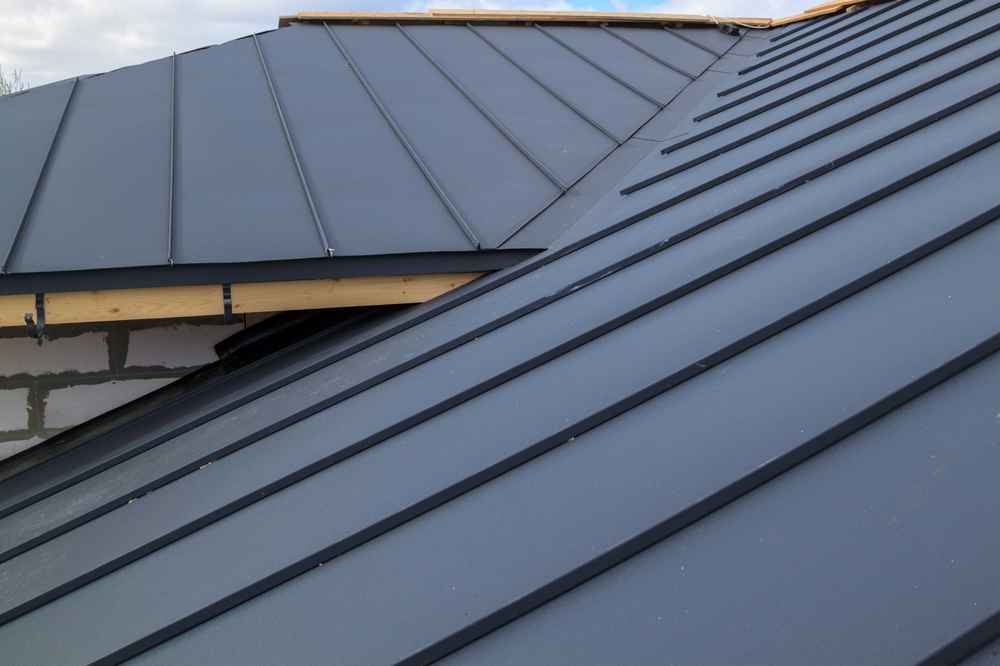
Deep Dive: Technical Insights, Warranties & What Cornett Roofing Offers
Storm Risk Factors & Local Conditions
Indianapolis experiences hail, hailstones up to golf-ball size, and gusty summer winds. Materials must resist impact, uplift, and water intrusion. Flashings, valleys, and penetrations are common failure points.
Warranties & Installation Integrity
- Many roofing warranties exclude damage from hail or wind if installation doesn’t meet spec
- That’s one reason Cornett provides warranties that align with our region’s storms, including workmanship backed by local knowledge
How Cornett Handles It Right
- We fabricate or source materials rated for hail and wind, then test them in local conditions
- We reinforce decks and flashing, using heavy-duty fasteners and underlayment
- We ensure each roof is installed to spec — no shortcuts — so your warranty holds up
Pros & Cons Snapshot
| Material | Storm‑Resilient Strengths | Tradeoffs & Risks |
| Class 4 Asphalt | Cost-effective impact upgrade | Shorter life, moderate repair needs |
| Metal Roofing | Strong against impact and uplift | Upfront cost, potential dents |
| Synthetic Slate | Stylish + impact-resistant | Mid-level cost |
| Natural Slate / Tile | Long-lasting, premium | Heavy, expensive installation |
| Flat Membranes | Seamless, built for water | Less hail resistance |
Indianapolis Storm Roofing FAQs (Storm‑Ready Roofs Explained)
What is the best roofing material for summer storms?
The best roofing material for summer storms is one that offers high impact and wind resilience—such as standing seam metal, impact-rated asphalt, or a strong synthetic option.
How do I know if my roof is hail storm ready?
You know your roof is hail storm ready if it has a Class 4 impact rating, reinforced flashing, proper fasteners, and was installed to manufacturer standards for storm conditions.
Will storm damage void my roof’s warranty?
Storm damage can void your warranty if materials fail because of poor installation or using non-rated products. Roofers must install per spec for warranties to remain valid.
Even a “storm‑resistant” roof can’t leak, right?
Even a storm-resistant roof can leak if flashings, roof penetrations, or seams are poorly installed — especially during wind-driven rain.
Should I choose metal, asphalt, or synthetic roofing?
You should choose based on your budget, longevity goals, and roof structure. Metal is durable, asphalt is affordable, and synthetic offers a middle ground with stronger performance.
Can Cornett Roofing help prepare my home for storms?
Yes. Cornett Roofing Systems can inspect your roof for storm readiness, evaluate materials, and help you choose and install a roof built to handle Indiana’s summer storms.
Conclusion: Choose a Roof That Battles Storms — Not Just Survives
In Indianapolis, where summer storms and hail are part of the calendar, choosing the best roofing material is more than stylish — it’s essential. Whether it’s reinforced asphalt, sleek metal, or premium synthetic solutions, investing in storm-resilient roofing means fewer repairs and peace of mind.
At Cornett Roofing Systems, we combine local experience, precise installation, and strong warranties to build roofs that face storms head-on. Let’s make your next roof a line of defense — not a liability.
Schedule your free inspection today and let us help make your roof truly storm-ready.

